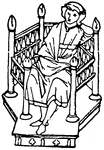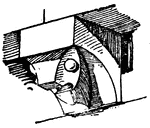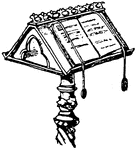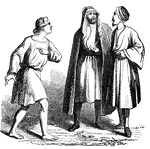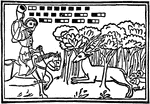
Medieval Amice
Three examples of the medieval method of putting on the amice. The amice is a liturgical vestment used…

Arbalister
"One armed with the arbalist; a crossbowman; especially, a soldier carrying the arbalist of war."-Whitney,…
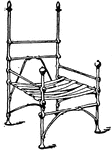
Frame of Medieval Arm-Chair
The Frame of Medieval Arm-chair was made of iron with no drapery included.
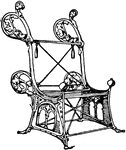
Medieval Arm-Chair
The Medieval Arm-chair from the 13th century was made out of metal with no drapery included.
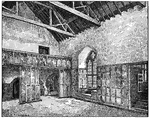
Gothic Architecture Banquet Hall
"The Banqueting Hall at Haddon is a good type of the baronial halls in this century. The minstrels'…

Medieval Bedstead
The Medieval bedstead of the 13th century was richly decorated with turned posts and carved sides. The…

Medieval Bedstead
The Medieval bedstead of the 12th century was richly decorated with turned posts and carved sides. The…

Fourteenth Century Illumination Ornaments Border
A border ornamentation used in illuminated manuscripts during the fourteenth century.

Carnarvon Castle
"This fortress was founded by Edward I in 1283. It is one of the most impressive of the decayed medieval…
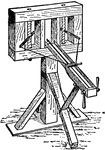
Catapult
A catapult is any one of a number of non-handheld mechanical devices used to throw a projectile a great…

Gothic Architecture Arch Moulding Sunk Chamfer
A section of an arch with sunk chamfer commonly found in Gothic architecture during the fourteenth century.…

Medieval Chest
This Medieval chest is from England. It was a prismatic box without feet, with delicate iron mounts…
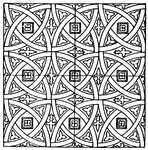
Medieval Tile Circle Pattern
This Medieval Tile circle pattern is a stained glass design. It the oldest process of fitting together…
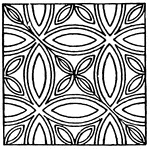
Medieval Tile Circle Pattern
This medieval tile circle pattern is a stained glass design. It the oldest process of fitting together…

Medieval Tile Circle Pattern
This medieval tile circle pattern is a stained glass design. It the oldest process of fitting together…

Medieval Circular Panel
The Medieval circular panel is found on a glass-painting in Soissons cathedral in France.

Gothic Architecture City Gate
An illustration of a city gate in York during the fourteenth century illustrating Gothic architecture.…

Gothic Architecture Alfriston Clergy House
A clergy house in Alfriston, England illustrating typical Gothic architecture during the fourteenth…

A Southern View of the Cathedral of Cologne in Germany
Illustration of the southern side of the Cathedral of Cologne. Construction on the cathedral was begun…

Gothic Architecture Ornaments Column Base
The base of the column illustrating the Gothic ornamentation during the fourteenth century. The bottom…

Gothic Architecture Column
An illustration of Gothic architectural decoration of the column. The column illustrated shows how the…
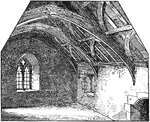
Interior Somersetshire Fisherman's Cottage
The interior view of the Fisherman's Cottage in Somersetshire. The interior of the cottage have a window…
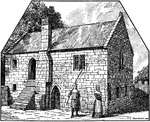
Somersetshire Fisherman's Cottage
An outside view of a fisherman's cottage in Somersetshire illustrating common architectural features…
Gothic Architecture Decoration
A Gothic architectural ornamentation commonly found during the fourteenth century. The crocket was a…

Medieval Desk
This Medieval Desk was actually called a double-desk. It had a revolving shaft and was constructed at…
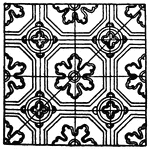
Medieval Enamel Pattern
The Medieval enamel pattern is a design that uses metal fillets that are filled with pulverized colored…
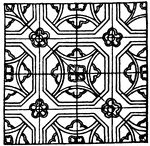
Medieval Enamel Pattern
The Medieval enamel pattern is a design that uses metal fillets that are filled with pulverized colored…

Gothic Architecture Finial
An architectural decoration of the finial commonly found in Gothic architecture. The finial was used…

Medieval Folding-Chair
This Medieval Folding-Chair from the 9th or 10th century included a miniature painting of King Nabuchodonosor.
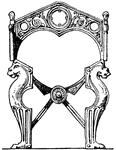
Medieval Folding-Chair
This Medieval Folding-Chair is made of bronze gilt found in the Throne of Dagobert.

Medieval Folding-Chair
This Medieval Folding-Chair dates back to the 12th century, it was made of bronze. Its an Arm-Chair…

Medieval Conventionalized Foliage
This architectural sculpted foliage shows the gothic style of Notre Dame de Paris. "Medieval Conventionalized…

Frate della Misericordia
"A Frate della Misericordia. MISERICORDIA, the name of a society (of laymen) in Florence, founded in…

Medieval Fold-Tape Fret Band
The Medieval Fold-Tape Fret Band has a meandering pattern that interlaces.

Gauntlet
The Gauntlet is a piece of protective armor for the hand, dating back to the 12th century. The first…
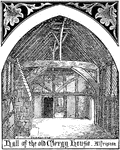
Gothic Architecture Alfriston Clergy House Hall
An illustration of the hall in Alfriston Clergy House. The hall illustrates typical architectural support…

Northampton St. John's Hospital
The middle window is the tracery found on the St. John's Hospital, Northampton. The two faces on the…

Hotel de Cluny
An illustration of the Hotel de Cluny in Paris, France. The Hotel de Cluny is a small palace from the…
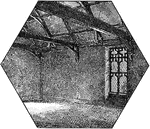
Gothic Rectory in Market Deeping House
The interior view of the rectory in Market Deeping during the fourteenth century. The empty room contains…

Merchant's Parlour Salisbury House
An interior view of a merchant's parlour in Salisbury during the fourteenth century. The interior have…

Medieval Lectern
This medieval lectern is from Venice, Italy. Often with a design of an eagle, these desks were of rich…

Mandorla
A Mandorla is a Vesica Piscis shaped aureola which surrounds the figures of Christ and the Virgin Mary…
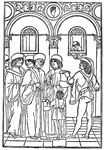
Fasciculus Medicinae
This is an illustration of Fasciculus Medicinae by artist Ketham during the 15th century. It is a collection…
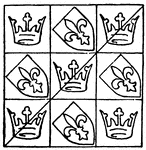
Medieval Tile Pattern
This Medieval Tile circle pattern is a stained glass design. It the oldest process of fitting together…
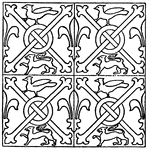
Medieval Tile Pattern
This medieval tile pattern is a stained glass design. It the oldest process of fitting together pieces…

Medieval Tile Pattern
This medieval tile circle pattern is a stained glass design. It the oldest process of fitting together…
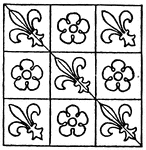
Medieval Tile Pattern
This medieval tile pattern is a stained glass design. It the oldest process of fitting together pieces…
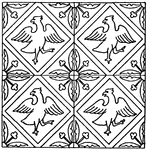
Medieval Tile Pattern
This medieval tile pattern is a stained glass design. It the oldest process of fitting together pieces…
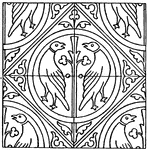
Medieval Tile Pattern
This medieval tile pattern is a stained glass design. It the oldest process of fitting together pieces…
